'Business' of Geology
The 'business' of geology is a complicated and rather intricate affair. Moreover, the Richtersveld and Namaqualand boast a particularly long and convoluted geological timeline which, quite frankly, sets my mind a-boggle. Nevertheless, the peculiar landscape, plant life, mineral deposits and cultural riches of the region are directly connected to the rocks on which they rest.
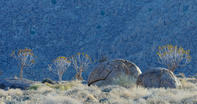
So, here’s a quick overview of the story… The earliest identifiable rock layers in the Namaqualand region date to around 2 billion years ago. Known as the Orange River Group, these are mainly igneous rocks that are volcanic in origin. The lavas of the Orange River Group were then overlain by some sedimentary rocks (sandstone and shale). These can still be seen in the Rosyntjieberg formation, located in the Richtersveld National Park.
Intrusion Events
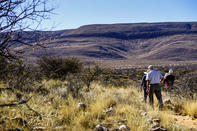
A long period of intrusion events followed the formation of rocks layers, during which molten rock from the Mantle was pushed up through cracks in the crust and cooled close to the surface. This resulted in the formation of several granitic suites that formed a granite ‘basement’, which stretches from the Knersvlakte (north of Vanrhynsdorp) to Steinkopf.
This area is now known as the Namaqualand Metamorphic Complex or Province, as the heat from these subterranean intrusions transformed (metamorphosed) the surrounding rocks.
Thus, the volcanic rocks changed into schist, shale turned into slate and sandstone became quartzite.
In the Richtersveld, these intrusions include: The Vioolsdrift Suite, emplaced 1.9-1.75 billion years ago The Richtersveld Igneous Suite, dating back 1 billion years The Gannakouriep Suite, a series of north-south tending black dykes that were emplaced between 870 and 540 million years ago
Mafic Bodies
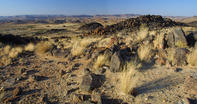
An important element of these intrusion events is the presence of a series of discontinuous ‘mafic bodies’, which contain deposits of copper and other valuable minerals. These isolated bodies of ore are found in distinctive ‘steep structures’ and are known collectively as the Koperberg Suite.
The erratic copper deposits of Namaqualand would later play an important role in the development of the region. Then, around 850 million years ago, the vast landmass of Pangaea began to split apart (or rift) into the continents that we know today.
This caused an ocean trough to form in a north-south orientation across much of present-day Namaqualand. Material was subsequently eroded from the hinterland and deposited into this trough, consolidating into the various formations of the Gariep Group.
Vandersterr and Stinkfontein
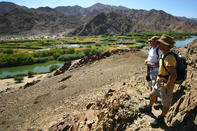
In the Richtersveld, some of these sediments are thought to have collected at the foot of an ancient mountain range. This caused calcium carbonate to precipitate out of the water, forming limestone and dolomite.
These rocks were subsequently subjected to heat and pressure, causing them to metamorphose into the erosion-resistant quartzites and marbles of the Stinkfontein group. Another element of the Stinkfontein group is the Kaigas Formation, a collection of tillite rock, deposited by glaciers that once crept through the region.
This is the oldest known glacial deposit in the world. The Vandersterr and Stinkfontein Mountains (the so-called backbone of the Richtersveld) are part of this group and contain some of the highest peaks in the area.
Ecologically, these two ranges are important because they act as a barrier that prevents the moisture-bearing clouds that roll in from the Atlantic Ocean from reaching the interior. This creates several distinct microclimates within the Richtersveld, which is one of the factors that contribute to its high botanical diversity.
The Nama and Numees
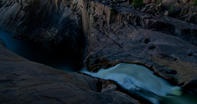
Next, around 570 million years ago, there was a period of sedimentation that created the Nama and Numees Groups, which consist of dolomite, limestone (the Hilda Suite), shale and sandstones. 540 million years ago, this group of flat-lying rocks was intruded by the Kuboos-Bremen suite of granites, which occur in a rough line that runs northwest-southeast.
The Ploegberg Mountains (near the village of Kuboes) and the granitic Tatasberg pluton (located in the Richtersveld National Park) are part of this suite. These plutons are large domes of rock that are created when volcanic material rises up from the Mantle and cools in underground chambers, only to be exposed when the rocks above it are eroded away.
Another example of a pluton is the famous Paarl (Pearl) Rock, located in the south-western Cape. Around 450 million years ago, continued continental rifting caused a large basin to open up in the vicinity of what is now the south-western Cape.
This caused the erosive forces that were eating away at the Namaqualand plateau to shift to the south. The sediments that were thus transported into the new basin would eventually form the great Cape Fold Mountain ranges and the nutrient-poor soil of the Cape Floral Kingdom (also known as Fynbos).
By David Fleminger